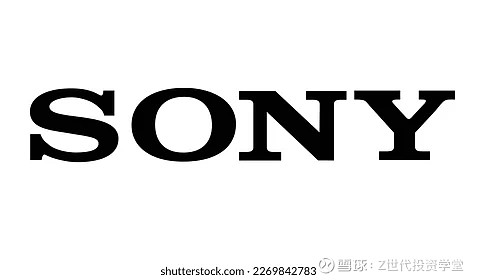
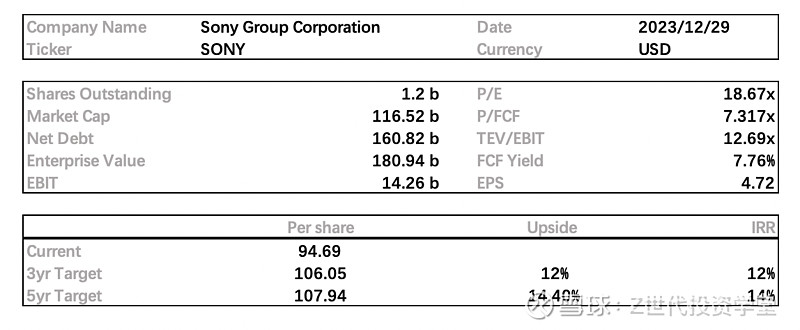
1 Company Overview
Sony is a technology company with operations spanning various sectors, including gaming, electronics, entertainment, and finance.
In 1946, Masaru Ibuka and Akio Morita founded the precursor to Sony in a post-war department store.
In 1955, the company introduced Japan's first transistor radio.
In 1968, Sony developed Trinitron technology, leading to the introduction of color televisions on the market.
In 1979, Sony launched the first portable cassette player, the Walkman.
In 1983, Sony developed CD technology.
In 1989, Sony acquired the American record company Columbia Records for $6 billion.
In 1991, Sony integrated lithium-ion battery technology, leading to the development of commercial lithium-ion batteries.
In 1994, Sony introduced the PlayStation gaming console.
In 2001, Sony introduced the world's first digital single-lens reflex (DSLR) camera, named Alpha. This product marked their first breakthrough in digital photography technology and served as a pivotal moment in their entry into the professional camera market.
In 2004, Sony launched the world's first liquid crystal display (LCD) television, named Bravia.
In 2008, Sony released the world's first Blu-ray Disc (BD) player, named BDP-S1.
In 2010, Sony introduced the world's first 3D television, named HX800
In 2012, Sony launched the world's first smartphone, named Xperia, initiating their venture into the smart terminal market.
In 2016, Sony introduced the world's first virtual reality (VR) headset, named PlayStation VR. This product marked their breakthrough in VR technology and served as a key moment in their entry into the immersive experience market.
1.1 business segments
Sony currently operates in six major business segments:
Gaming & network services:
The gaming division revolves around the PlayStation console, with the latest version being the PS5 released in 2020, with approximately 19.1 million units sold in the fiscal year 2022. Classic games such as the "Horizon" series and "God of War" series contribute to the success of the platform. In addition to the console, Sony released the VR headset PS VR2, game controllers, headphones, and more in 2022. As of December 9, 2023, Sony announced that global cumulative sales of the PS5 exceeded 50 million units. Popular games like "Marvel's Spider-Man 2" and "Elden Ring" have also boosted PS5 sales.
Entertainment and Technology:
This segment includes various product categories such as televisions, cameras, and smartphones. TV revenue accounts for the highest share at 37%. The Alpha series of full-frame mirrorless cameras, launched in 2013, has been a classic product for a decade. The Xperia brand represents Sony's smartphones, initially introduced by the joint venture Sony Ericsson. The segment also includes professional movie cameras, live broadcasting cameras, medical imaging products, and more.
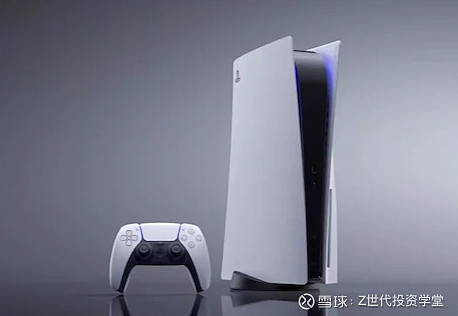
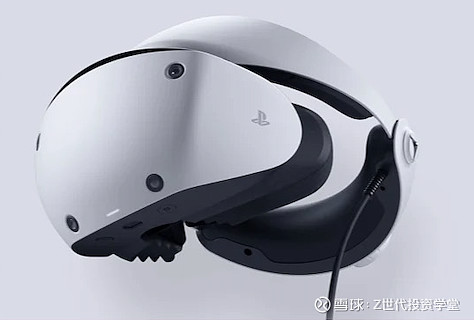
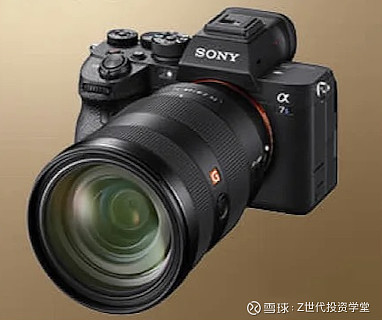
Music:
Sony's music segment involves recording and distribution. In 1968, Sony entered the music industry by investing in Columbia Records. In 2021, streaming revenue accounted for 42%, with the rest coming from music distribution, visual platforms, and other sources. The company has signed numerous artists under its label.
Movies:
The movie segment focuses on the production and distribution of films. Sony acquired Columbia Pictures in 1989 and purchased the rights to Spider-Man from Marvel in 1999 for $7 million. Over the past two decades, "Spider-Man" and "Venom" have been successful film franchises for Sony.
Imaging and Sensing:
This segment primarily provides image sensors to corporate clients for use in smartphones, automobiles, industrial equipment, and more. For instance, Sony supplies the imaging components for iPhones.

Financial Services:
Financial services encompass insurance and banking-related businesses.
1.2 revenue drivers
For the fiscal year 2022 (April 1, 2022, to March 31, 2023), Sony reported total revenue of 11.54 trillion Japanese Yen, representing a year-on-year growth of 16.31%. The net profit attributable to the parent company reached 9.37126 trillion Japanese Yen, showing a 6.23% increase compared to the previous year.
Breaking down the revenue by business segments:
Gaming: The gaming segment achieved a revenue of 3.64 trillion Japanese Yen.
Entertainment and Technology: The entertainment and technology segment generated revenue of 2.48 trillion Japanese Yen.
Music: The music segment contributed 1.38 trillion Japanese Yen to the overall revenue.
Movies: The movie segment reported revenue of 1.37 trillion Japanese Yen.
Imaging and Sensing: The imaging and sensing segment accounted for revenue of 1.4 trillion Japanese Yen.
Financial Services: The financial services segment contributed 1.45 trillion Japanese Yen to the company's total revenue.
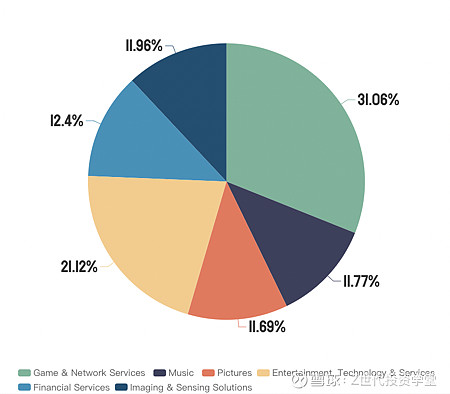
2 competitor analysis
Sony holds a leading position in the global gaming console market.
In the fiscal year 2022 (April 1, 2022, to March 31, 2023), Sony derived a significant portion of its revenue from the Gaming & Network Services segment, accounting for 31% of the total income. Within the gaming segment, the revenue breakdown indicates that 31% of the gaming revenue comes from Downloadable Content (DLC). Additionally, gaming hardware contributes to 21% of the gaming revenue.
In the global gaming console market report for Q3 2023, Sony has reclaimed the top position with a 54% market share and a 42% year-on-year growth. Despite facing challenges such as supply chain constraints and macroeconomic uncertainties, Sony experienced a 4.7% decline in gaming console shipments in 2022. However, with improvements in the supply chain, the PlayStation 5 (PS5) demonstrated robust performance in 2023. According to information obtained from the official Sony website, as of December 9, 2023, the cumulative global sales of Sony's PS5 surpassed 50 million units. The popularity of hit games like "Marvel's Spider-Man 2" and "God of War 3" has also contributed to the strong sales performance of the PS5.
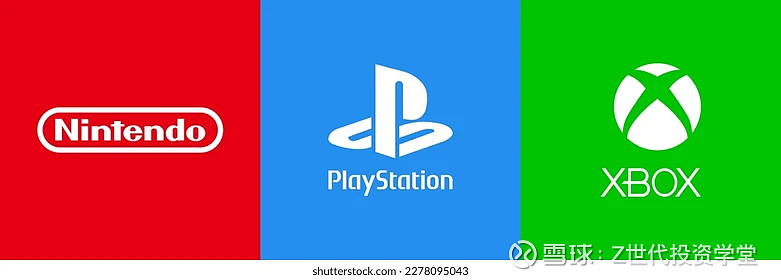
Sony has replaced Nintendo as the leader in the global gaming console market, capturing a 54% market share and experiencing a 42% year-on-year growth. In this quarter, Sony surpassed Nintendo, becoming the top player in both market share and growth rate in the gaming console market. This achievement marks Sony's highest quarterly shipment volume in its history.
According to Finbold data, as of October 2023, Sony's PS5 has sold 14.36 million units from the beginning of the year to October, averaging approximately 1.43 million units per month. This translates to an estimated daily sales rate of around 47,666 units.
Nintendo, on the other hand, faced a 15% year-on-year decline in shipment volume during the third quarter of 2023, dropping to the second position with a 27% market share. This decline occurred despite the success of annual titles like "The Legend of Zelda: Kingdom of Tears" and the film "Super Mario Bros. Great Adventure," which helped mitigate a potentially more significant downturn.
Microsoft's Xbox Series X/S experienced a 6% decrease in shipment volume during the third quarter of 2023, reaching approximately 1.8 million units. The Xbox Series X accounted for the majority of sales at 72%. However, Microsoft's flagship title "Starfield" fell short in sales compared to Sony's "Marvel's Spider-Man 2" and Nintendo's "The Legend of Zelda: Kingdom of Tears" and "Super Mario Bros.: Wonder."
In the specific manufacturer rankings for the CIS (CMOS Image Sensor) market in 2023, Sony continues to firmly hold the first position, with its market share rebounding to 42%.
In 2021, Samsung held a 29% market share in the CMOS image sensor market, while Sony commanded a dominant 46% share. In 2022, the ranking remained consistent with Sony in the first position, Samsung in the second, and Omnivision in the third, similar to the previous year. However, there were notable changes in the specific market shares. Sony's share increased to 42%, Samsung's share dropped to 19%, and Omnivision's share decreased from 13% to 11%.
In the 2023 CIS market rankings, Sony continues to maintain its first position with a market share rebounding to 42%. Samsung secures the second spot with a reduced market share of 19%, and Omnivision Group's market share falls to 11%, approaching pre-pandemic levels. Currently, the global automotive CMOS image sensor market is dominated by three key players: ON Semiconductor, Omnivision Technologies, and Sony, shaping the competitive landscape.
Sony has achieved record-breaking revenue in the smart imaging sector, securing the top position with an impressive 55% market share.
According to the latest research report released by TechInsights in 2023, the smartphone image sensor market has experienced slight growth, surpassing a total revenue of over $14 billion. This indicates a continued strong demand for image sensors in the smartphone market.
In terms of market rankings, Sony secures the top position with an impressive 55% market share. This achievement not only highlights Sony's robust capabilities in the field of image sensors but also further solidifies its leading position in the industry. Sony's success can be attributed to its high-quality large-format CIS (Complementary Metal-Oxide-Semiconductor) product portfolio and precise targeting of the high-end smartphone market.
Following closely is Samsung, with Omnivision in the third position. The report also mentions that the demand for 50-megapixel CIS (CMOS Image Sensor) is approaching saturation, with emerging competitors such as SK Hynix and another 50-megapixel CIS supplier for a Chinese smartphone OEM gradually gaining prominence. This suggests that future competition in the smartphone image sensor market will intensify.
Overall, while the smartphone image sensor market faces various challenges, the continuous technological advancements and sustained growth in market demand suggest significant potential for development. Major manufacturers need to focus on continuous innovation and enhancing their capabilities to stand out in the competitive market.
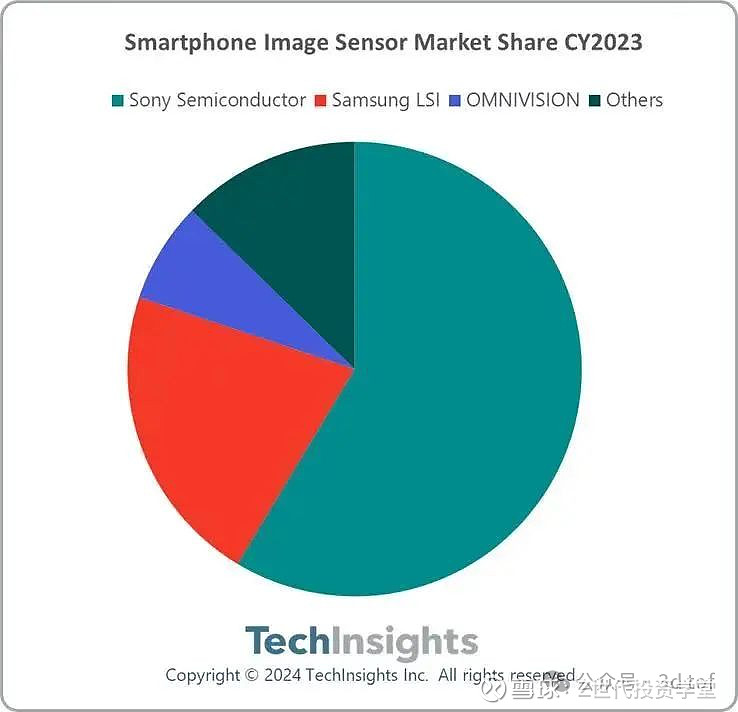
3 investment thesis
Sony leverages its IDM (Integrated Device Manufacturer) advantage, and CMOS technology plays a crucial role in the smart automotive perception industry chain, particularly in the context of autonomous driving.
Sony's ability to excel in the development of CMOS technology is attributed to its significant advantage as an IDM (Integrated Device Manufacturer) in the field of image sensors. As an IDM, Sony possesses complete vertical integration capabilities in the semiconductor industry. This allows Sony to have both production and research capabilities in-house, enabling rapid iteration of technology and swift adaptation to changes in the market. On the other hand, companies like Omnivision, operating as Fabless manufacturers (responsible for chip design without in-house production), rely on foundries like TSMC for manufacturing, making it challenging for them to iterate technology quickly and keep up with the rapidly evolving smartphone market.
As Sony starts to focus on and strategically position itself in the automotive CMOS image sensor market, its expertise from the smartphone sector is likely to shine through. The advantage gained in the smartphone domain, combined with Sony's integrated approach to research and production, positions it well to rapidly introduce corresponding products tailored to the evolving automotive market. This strategic move is anticipated to lead to a swift increase in market share, making Sony a potential leader in the field of automotive CMOS image sensors.
The development of VR has been a success for Sony, and Apple's creation of the Apple Vision could serve as a significant catalyst for Sony.
Sony generates approximately 10-15% of its annual revenue from imaging and sensing solutions. The new Apple Vision Pro, which includes 12 cameras and 5 sensors, relies on Sony's supply. Sony possesses some of the most advanced sensing solutions. Even Samsung, with the capability to manufacture camera lenses, uses some Sony sensors for the Galaxy S23 Ultra. Whether it's Apple, Meta, or any company that emerges victorious in the VR/AR race, Sony stands to benefit as it manufactures essential and fundamental components for these technologies.
4 Risk
Intense Market Competition:
Xbox has consistently been a competitor to PlayStation. Despite PlayStation's consistently higher sales, Xbox continues to exert pressure on Sony, urging them to continue investing in PlayStation to maintain a competitive edge. Microsoft's acquisition of Activision Blizzard indicates Microsoft's ongoing commitment to its gaming division. Even in the realm of cloud gaming, both companies are weighing the pros and cons, with Sony offering PlayStation Plus and Microsoft focusing on its GamePass.
Supply Chain Risks:
Another risk factor is Samsung in the imaging sensor space. While Apple uses Sony sensors, Google Pixel phones and other devices use sensors from Samsung. The success of Sony's imaging sensors is significantly tied to Apple being its customer. However, if Sony loses this advantage, Apple could easily turn to Samsung sensors or even decide to manufacture its own sensors, similar to their recent move away from displays manufactured by Samsung and LG.
Legal and Regulatory Risks:
As a global corporation, Sony is required to comply with the laws and regulatory requirements of various countries and regions. Changes in the regulatory environment across different markets, especially concerning intellectual property, data protection, and antitrust laws, could impact its operations.
Currency Exchange Rate Fluctuations:
Since Sony operates globally, fluctuations in currency exchange rates can have a significant impact on its revenue and profits. In particular, the fluctuation of the Japanese yen against the US dollar and other major currencies could affect its financial performance.
*Do note that all of this is for information only and should not be taken as investment advice. If you should choose to invest in any of the stocks, you do so at your own risk.
如果你想了解有哪些前沿科技的投资机会,想学习真投资大佬们的投资秘籍,想投资自己的人生,那就快来购买《大赢家》漫画吧!漫画中采访了许多职业投资人和上市企业,通过有趣的故事传达投资理念,我们相信在阅读的过程,你一定会有所收获。网页链接
